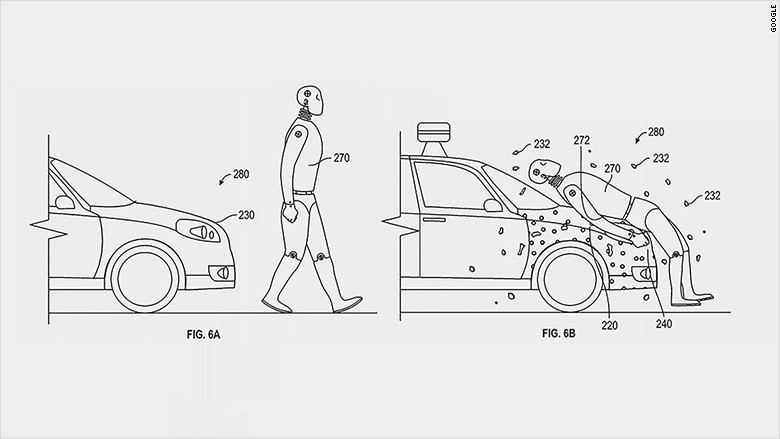Google has patented an adhesive that would protect pedestrians struck by an autonomous vehicle by gluing them to the car’s hood. The idea, as noted by the
patent, is to prevent “a secondary impact between the pedestrian and the road surface or other object.”
The "adhesive layer" on the hood, front bumper and front side panels of a car would have a thin coating that would break on impact, exposing the struck person to the underlying adhesive and keep the pedestrian from flying off the car. Fewer impacts would reduce pedestrian injuries.
WHAT IS AN ADHESIVE?
An adhesive is any substance applied to the surfaces of materials that binds them and resists separation,
according to BCC Research analyst Srinivasa Rajaram.
Its principal attribute is its ability to form strong bonds with the surfaces of a wide range of materials and to retain bond strength under expected use conditions, Rajaram explains.
“The use of adhesives offers many advantages over binding techniques such as sewing, mechanical fastening, and thermal bonding,” he
says. “These include the ability to bind different materials together, the ability to distribute stress more efficiently across a joint, cost effectiveness of an easily mechanized process, an improvement in aesthetic design and increased design flexibility.”
ADHESIVE INDUSTRY AND GLOBAL MARKET
The adhesive market depends greatly upon secondary industries, so trends in other sectors of the economy can significantly impact this industry, Rajaram observes. He says one sector showing increasing interest in adhesives is the automotive industry.
“Several U.S. automakers joined with adhesive makers to develop industry-specific applications to cut costs, reduce weight and even increase recyclability of cars made with these products. The market for reactive adhesives grew as the automotive industry moved away from mechanical fasteners,” Rajaram
says, adding that Google’s glue patent filing is a novel indication for the product.
Rajaram
estimates the global market for adhesive and adhesive-applying equipment to reach $46.9 billion and $62.1 billion in 2015 and 2021, respectively, demonstrating a five-year compound annual growth rate of 5%.
GOOGLE ON THE ROAD TESTING SAFETY OF ITS CARS
According to
Hope King, Google has been testing its vehicles on roads in California and Arizona. The fleet, which totals about 23 self-driving Lexus cars and 34 of the company’s mini prototype cars, is traveling about 10,000 to 15,000 miles every week in self-driving mode, she reports.
Google believes autonomous vehicles can help get people around easily and safely, but admits in its patent
filing that “while such systems are being developed, it must be acknowledged that, on occasion, collisions between a vehicle and a pedestrian still occur.”
King
notes that the company contends all but one of the accidents so far have resulted from human drivers in other vehicles. “The one accident that
Google admitted its self-driving car was responsible for was a fender bender that caused no injuries,” she notes.
The patent filing also notes that its adhesive approach of helping prevent further pedestrian injury could be applied to other modes of personal transportation, such as "truck, bus, van, semi-trailer truck, motorcycle, golf cart, ATV, off-road vehicle, or farm vehicle, as well as a carrier that rides on a track, such as a rollercoaster, trolley, tram, or train car."
As detailed by
Megan Crouse, the patent was filed in November 2014 and issued on May 17, 2016. Crouse noted that while the patent covers the adhesive layering idea as well as the method of application, “Google hasn’t specified what the adhesive or the layers are made of, but needs to make sure that it will stand up to the force of an accelerating and braking car, and also that anything stuck to the adhesive will be able to be un-stuck.”




